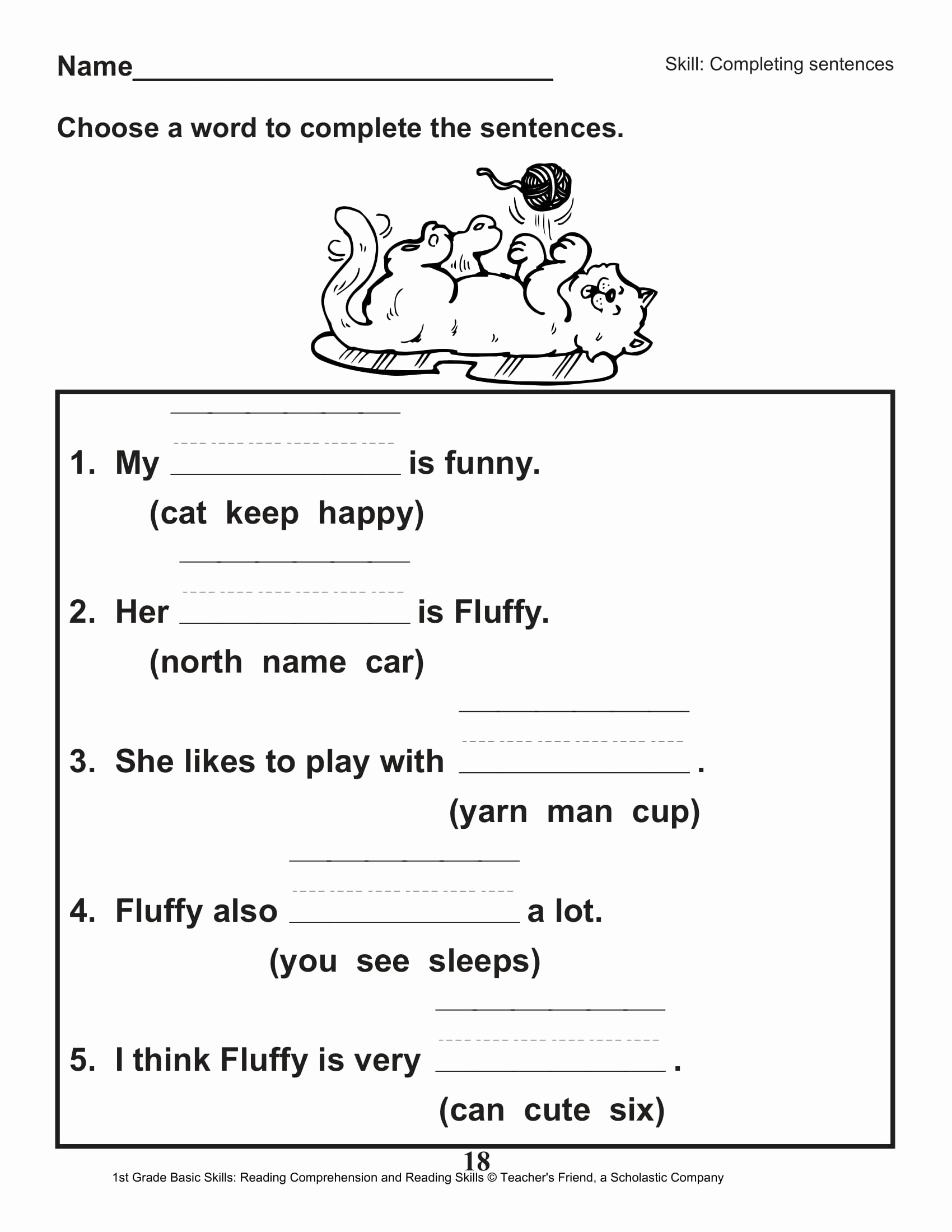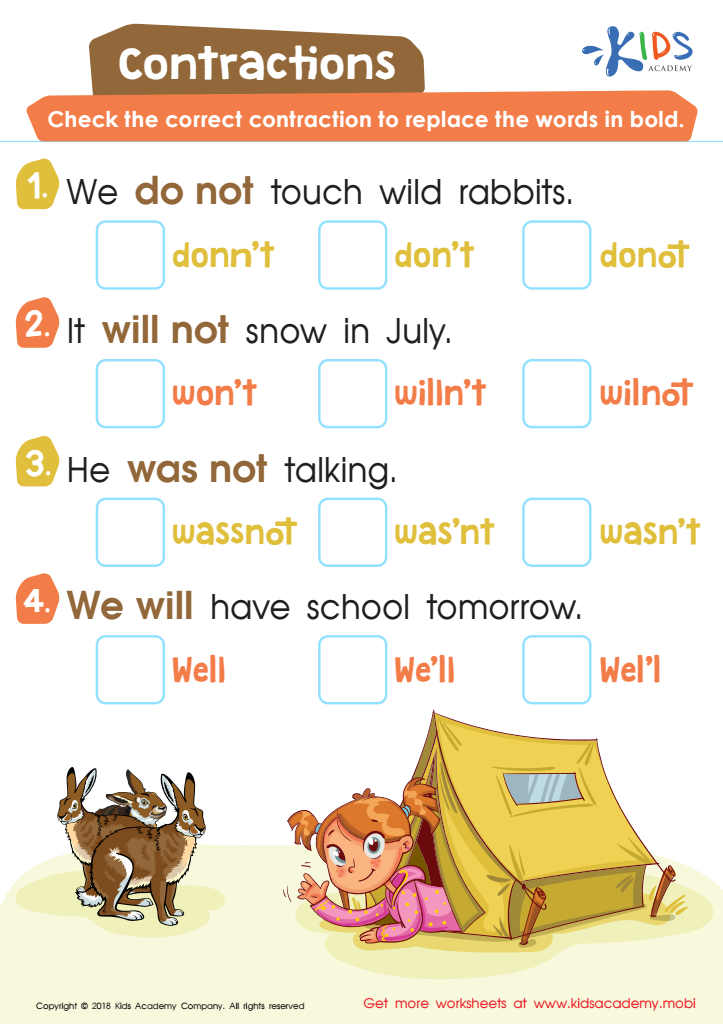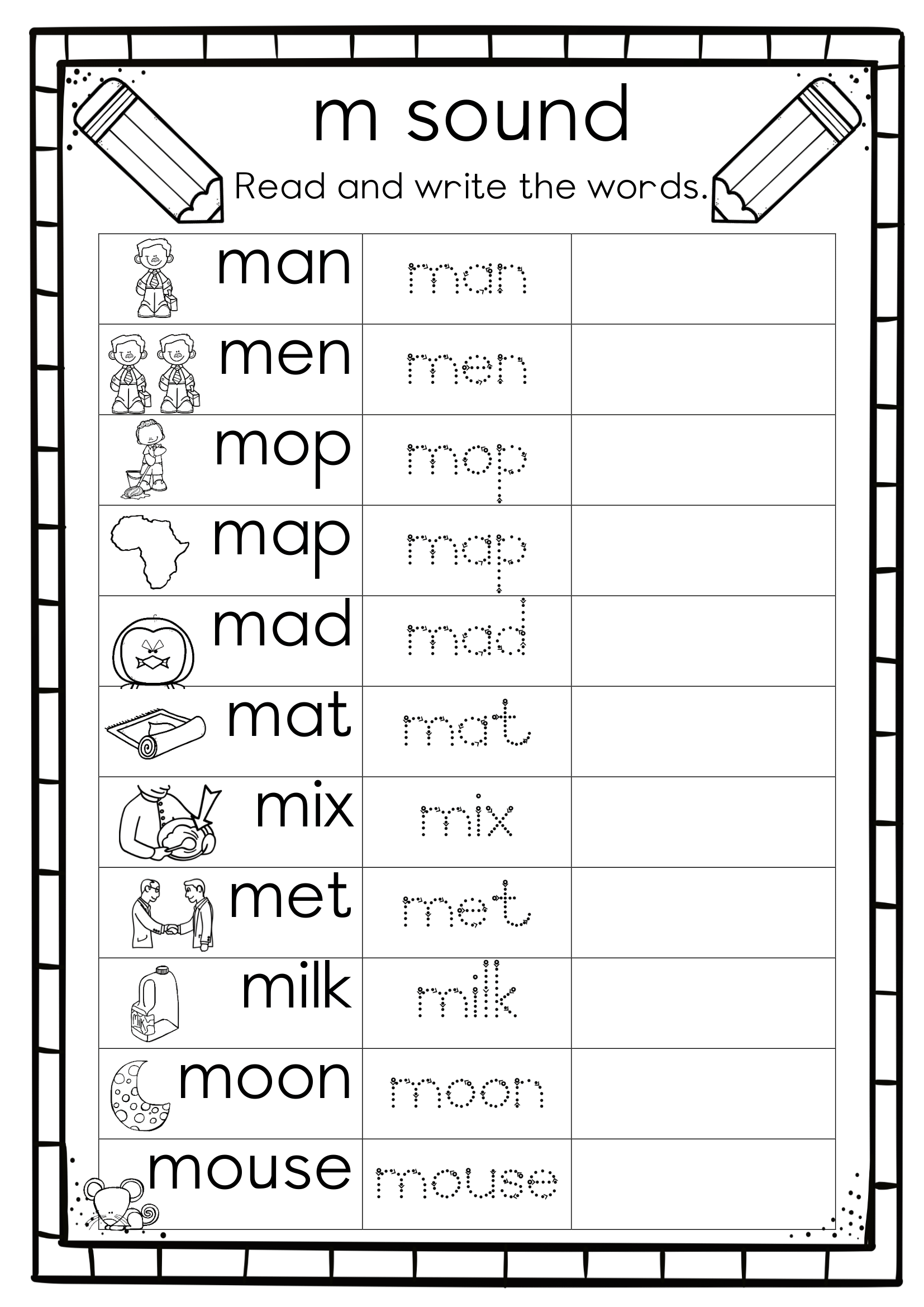
Laying the Linguistic Foundation: The Indispensable Role of 1st Grade Grammar Worksheets
The journey through first grade is a pivotal time in a child’s educational development. Beyond learning to read and write basic sentences, it’s where the foundational building blocks of language truly begin to solidify. Among the many tools educators and parents utilize to foster this growth, 1st grade grammar worksheets stand out as an indispensable resource. These carefully designed materials offer a structured, engaging, and repetitive way for young learners to grasp essential grammatical concepts, setting them on a path toward clear communication and strong literacy skills.
The Grammar Landscape of First Grade: What Concepts Are Covered?
Before diving into the specifics of worksheets, it’s crucial to understand the grammatical concepts typically introduced and reinforced in the first grade. These are not abstract, complex rules, but rather concrete ideas that children encounter daily in their speech and reading.

- Nouns: First graders learn that nouns are words that name people, places, animals, or things. Worksheets often feature exercises where children identify nouns in sentences, categorize them, or differentiate between common nouns (e.g., boy, park, dog) and basic proper nouns (e.g., John, New York, Rover). They also begin to explore singular and plural forms (adding -s or -es).
- Verbs: The concept of action words, or verbs, is introduced. Children learn to identify verbs in sentences and understand that verbs tell what a noun is doing. Simple present tense verbs are the primary focus, often through activities like circling all the action words in a list or completing sentences with appropriate verbs.
- Adjectives: Descriptive words, or adjectives, are taught as words that describe nouns. Worksheets might ask children to circle adjectives that tell "what kind" or "how many," or to add adjectives to simple sentences to make them more interesting.
- Sentences: A major focus in first grade is understanding what constitutes a complete sentence. Children learn that a sentence expresses a complete thought and typically includes a subject (who or what the sentence is about) and a verb (what the subject is doing). They also learn to differentiate between statements, questions, and exclamations, recognizing the appropriate end punctuation for each.
- Capitalization: Mastering capitalization rules is a key skill. First graders learn to capitalize the first word of every sentence, proper nouns (names of specific people, places, days of the week, months), and the pronoun "I."
- Punctuation: Beyond capitalization, students are introduced to basic punctuation marks: periods at the end of statements, question marks at the end of questions, and exclamation points at the end of exclamations. Commas in a series of three or more items might also be briefly touched upon.
- Subject-Verb Agreement (Basic): While not taught formally with complex terminology, first graders implicitly learn simple subject-verb agreement. For example, they learn that "The dog runs" is correct, while "The dogs runs" is not. Worksheets can help reinforce this through fill-in-the-blank activities.
- Pronouns: Basic pronouns like he, she, it, they, we, I, you are introduced as words that can replace nouns, helping to avoid repetition in sentences.





Why Worksheets Matter: The Multifaceted Benefits

Given the array of concepts, how do 1st grade grammar worksheets effectively support learning? Their benefits are numerous and contribute significantly to a child’s overall literacy development:
- Reinforcement and Repetition: Grammar concepts require repeated exposure and practice to truly stick. Worksheets provide a structured way for children to encounter and apply rules multiple times, solidifying their understanding.
- Independent Practice: Worksheets empower children to practice skills independently. This not only builds confidence but also allows teachers and parents to observe a child’s understanding without direct intervention, identifying areas where more support is needed.
- Assessment Tool: For educators, worksheets serve as an excellent informal assessment tool. They quickly reveal which concepts a student has mastered and which require further instruction or differentiation. For parents, they offer a clear snapshot of their child’s progress.
- Structured Learning: The format of a worksheet often breaks down complex concepts into manageable, bite-sized tasks, making learning less intimidating and more accessible for young minds.
- Visual and Kinesthetic Learning: Many worksheets incorporate visuals (pictures, coloring) and require writing, drawing, or even cutting and pasting, catering to various learning styles. This engagement makes abstract grammar rules more concrete and memorable.
- Focus and Concentration: Completing a worksheet requires a degree of focus and attention to detail, helping children develop these crucial executive function skills.
- Fine Motor Skill Development: The act of writing, circling, and drawing on worksheets further refines a child’s fine motor skills, which are essential for legible handwriting.


Exploring the Variety of 1st Grade Grammar Worksheets
The design of 1st grade grammar worksheets is as varied as the concepts they cover. This diversity keeps children engaged and caters to different learning preferences:
- Fill-in-the-Blank: These are common for practicing nouns, verbs, or adjectives. A sentence might have a blank space, and the child chooses the correct word from a word bank or generates their own.
- Example: "The _____ ran fast." (dog, cat, car)
- Circling/Underlining: Students are given sentences or paragraphs and asked to circle all the nouns, underline all the verbs, or highlight adjectives. This helps with identification.
- Matching Activities: Often used for singular/plural nouns, common/proper nouns, or matching a sentence to its correct end punctuation.
- Sentence Correction: Worksheets present sentences with errors in capitalization or punctuation, and children must rewrite them correctly. This is a powerful way to reinforce rules.
- Sentence Building/Scrambled Sentences: Children are given a set of words and asked to arrange them into a grammatically correct sentence, or they might be given a picture and asked to write a sentence about it, applying their grammar knowledge.
- Picture-Based Worksheets: These are excellent for visual learners. Children might label pictures with nouns, describe pictures using adjectives, or write sentences about pictures.
- Cut-and-Paste Activities: For a more hands-on approach, children might cut out words or phrases and paste them into the correct categories (e.g., "people," "places," "things") or assemble a sentence in the correct order.
Maximizing the Impact: Tips for Effective Use
Simply handing a child a worksheet isn’t enough. To truly leverage the power of 1st grade grammar worksheets, parents and educators should employ strategic approaches:
- Introduce Concepts First: Always teach or review the grammatical concept before assigning a worksheet. Use examples, real-life scenarios, and interactive discussions to ensure understanding.
- Make it Engaging: First graders thrive on fun! Look for worksheets with appealing graphics, themes, or even integrate them into games. Use colorful pens or stickers to make the process more enjoyable.
- Start Simple and Progress Gradually: Begin with very basic exercises and slowly introduce more complexity as the child gains confidence. Scaffolding is key.
- Provide Clear Instructions and Model: Read instructions aloud, clarify any unfamiliar vocabulary, and complete the first one or two examples together to ensure the child understands the task.
- Encourage Independence, But Offer Support: Allow children to attempt tasks on their own, fostering self-reliance. However, be available to provide gentle guidance, prompts, or re-explain concepts if they get stuck. Avoid simply giving the answers.
- Provide Constructive Feedback: Go over completed worksheets together. Celebrate correct answers and gently explain errors. Instead of just saying "wrong," explain why it’s wrong and how to fix it. This turns mistakes into learning opportunities.
- Integrate with Other Activities: Don’t let grammar be isolated. Point out nouns and verbs in storybooks, ask children to describe objects using adjectives, or have them correct your "mistakes" in a playful way during conversation. Connect worksheets to reading and writing assignments.
- Limit Session Length: First graders have short attention spans. Keep grammar worksheet sessions brief—10 to 15 minutes is often ideal—to prevent fatigue and maintain enthusiasm.
- Celebrate Progress: Acknowledge and praise effort and improvement. Positive reinforcement goes a long way in building a child’s confidence and motivation to learn.
Finding Quality 1st Grade Grammar Worksheets
Whether you’re a parent seeking to supplement your child’s learning or a teacher looking for versatile classroom resources, finding high-quality 1st grade grammar worksheets is easier than ever.
- Online Educational Platforms: Websites like Teachers Pay Teachers, K5 Learning, Education.com, and numerous others offer a vast array of free and paid printable worksheets created by educators.
- Educational Websites: Many non-profit educational organizations and government sites provide free, standards-aligned resources.
- Curriculum Publishers: Publishers of elementary school textbooks often provide supplementary workbooks or online resources that align with their core curriculum.
- Public Libraries: Libraries often have educational workbooks and resource books that you can borrow or photocopy.
- Teacher-Created Materials: Often, the most effective worksheets are those designed by experienced first-grade teachers who understand the specific needs and learning styles of this age group.
Beyond the Worksheet: A Holistic Approach to Grammar
While 1st grade grammar worksheets are invaluable, they are most effective when part of a broader, holistic approach to language learning.
- Reading Aloud: Regularly reading to children exposes them to correctly structured sentences and a rich vocabulary.
- Interactive Games: Many online and board games focus on parts of speech, sentence construction, and vocabulary, making learning fun.
- Daily Conversation: Engage children in conversations, encouraging them to speak in complete sentences. Gently model correct grammar in your own speech.
- Creative Writing: Provide opportunities for children to write their own stories, poems, or journal entries. This allows them to apply grammar rules in a meaningful context.
- Grammar Songs and Chants: Musical aids can be incredibly effective for memorizing rules, like those for nouns, verbs, or punctuation.
- Real-World Application: Point out grammar in everyday life – on signs, in books, during conversations. "Look, that sign uses a capital letter because it’s a name!"
Conclusion
The first grade is a critical juncture where children transition from emergent communicators to more confident and capable users of language. The structured practice provided by 1st grade grammar worksheets plays a fundamental role in this transformation. By thoughtfully incorporating well-designed worksheets into a broader, engaging learning strategy, educators and parents can lay a robust foundation for linguistic success, ensuring that first graders develop the grammatical understanding necessary for effective reading, writing, and communication throughout their academic journey and beyond.
